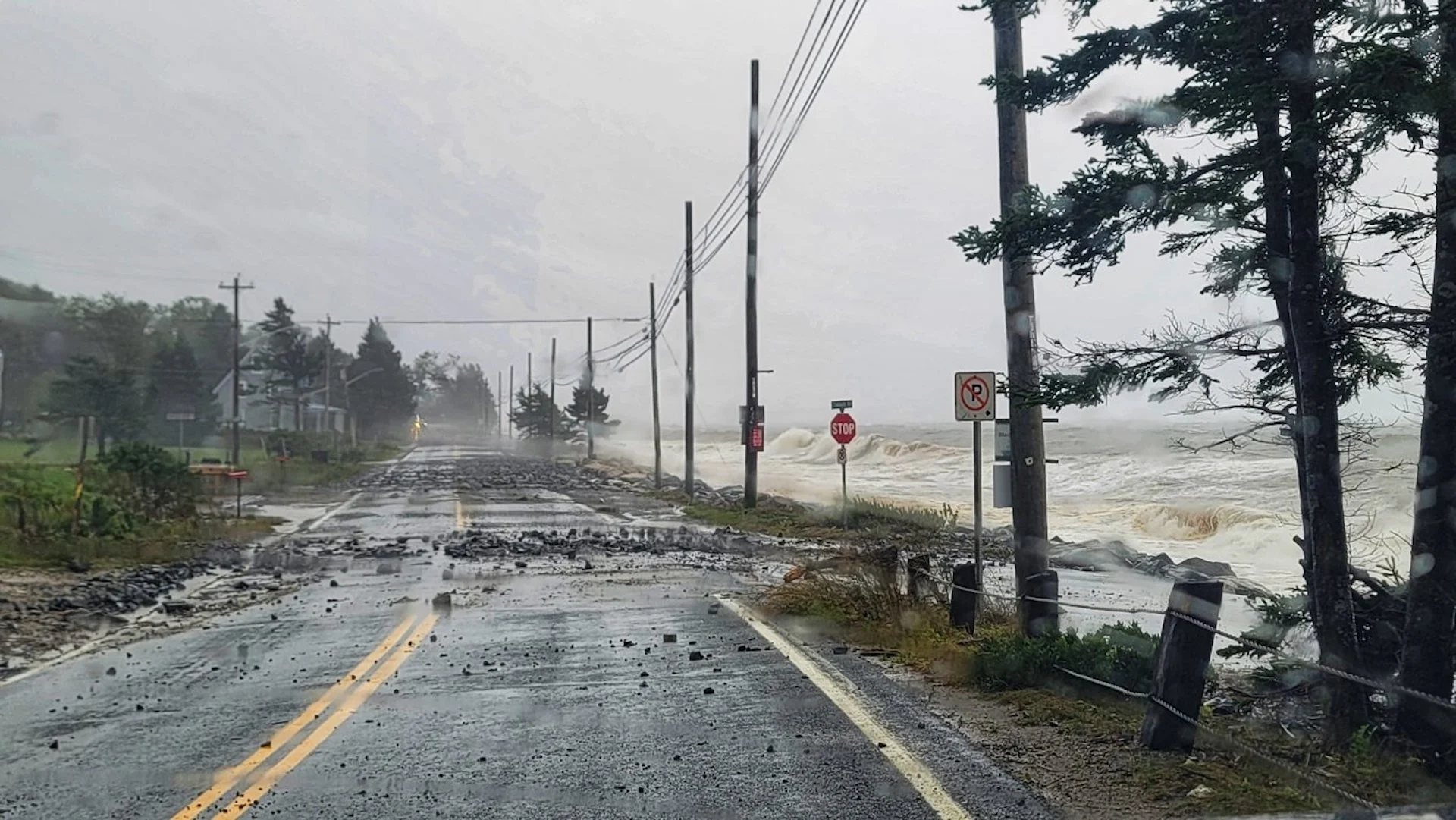
High winds, heavy rain continue Sunday as Lee crosses Maritimes
High winds and heavy rain continue as Lee rolls through the Maritimes Sunday
Visit The Weather Network's hurricane hub to keep up with the latest on tropical developments in Canada and around the world
More than 100,000 homes across the Maritimes are still without power Sunday morning after post-tropical storm Lee’s powerful winds knocked down trees and power lines throughout the region.
The storm’s high winds, heavy rain, coastal flooding, and rough surf will continues through the morning hours as Lee loses steam and pushes through the region. Conditions will gradually improve into the day.
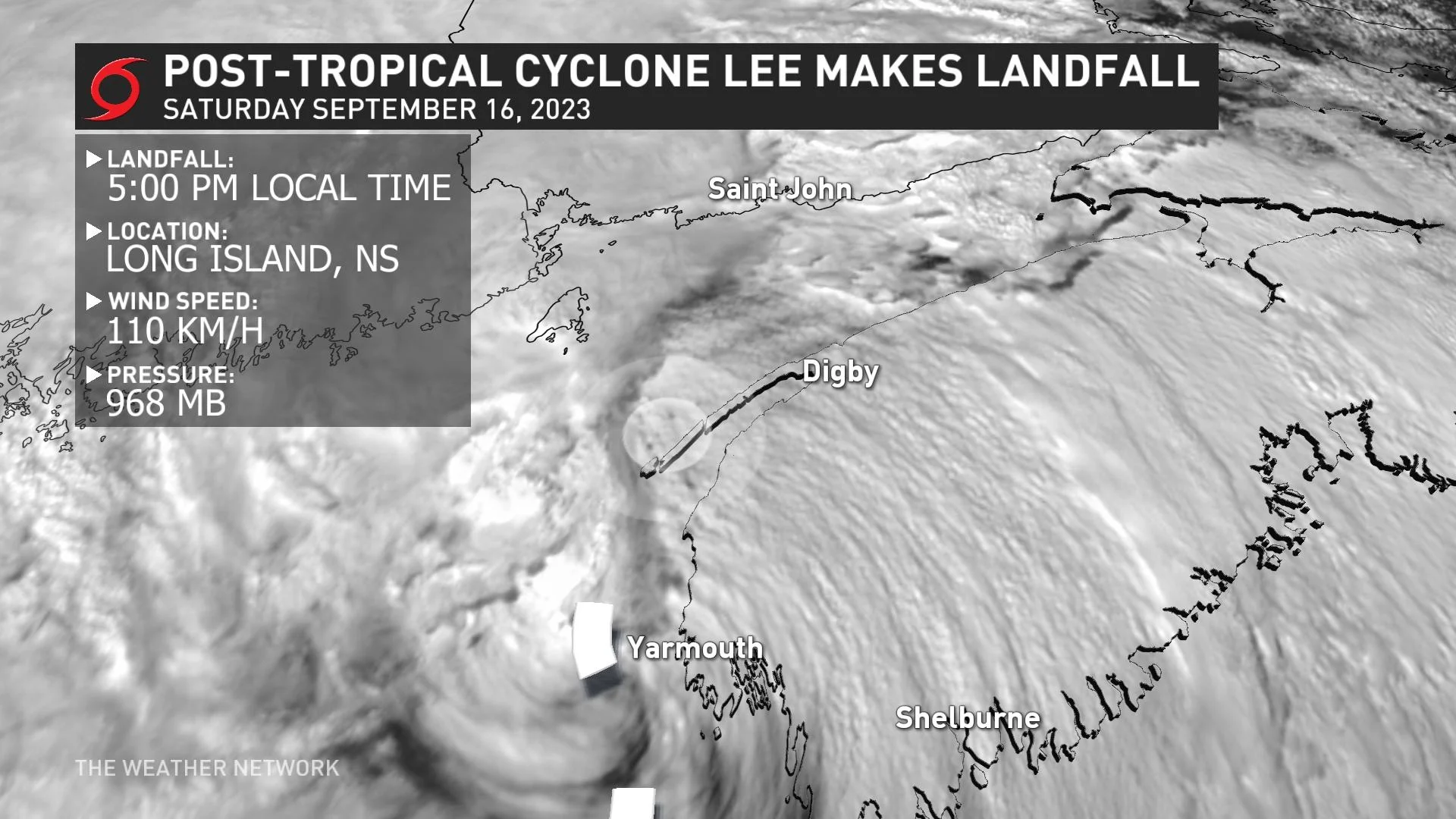
A risk for some additional power outages and flooding will persist for the duration of the storm.
RELATED: PHOTOS: Powerful Lee leaves impactful mark on the Maritimes, one injured
The centre of post-tropical storm Lee officially made landfall on Long Island in extreme southwestern Nova Scotia at 5:00 p.m. Saturday, according to the U.S. National Hurricane Center (NHC). Lee's centre moved over the Bay of Fundy and made a second landfall in New Brunswick Saturday evening.

Around 100,000 customers remained without power in Nova Scotia by 4:30 a.m. local time on Sunday, while roughly 13,000 customers were without power at the same time in New Brunswick. Maritime Electric reported several thousand customers without power on Prince Edward Island.
Numerous flights, events, and ferry crossings have been cancelled across the Maritimes. Peggy’s Cove also remained closed to the public due to the hazardous conditions.
DON'T MISS: Storm surge, winds cause damage in N.S. South Shore communities
Multiple road closures have been reported throughout Nova Scotia and New Brunswick as a result of standing water and fallen trees. One injury was also reported as a result of the storm. A motorist suffered non-life-threatening injuries when a pine tree fell on his vehicle while he was driving into Blockhouse, N.S., reported by CBC News. His injuries were not life-threatening.
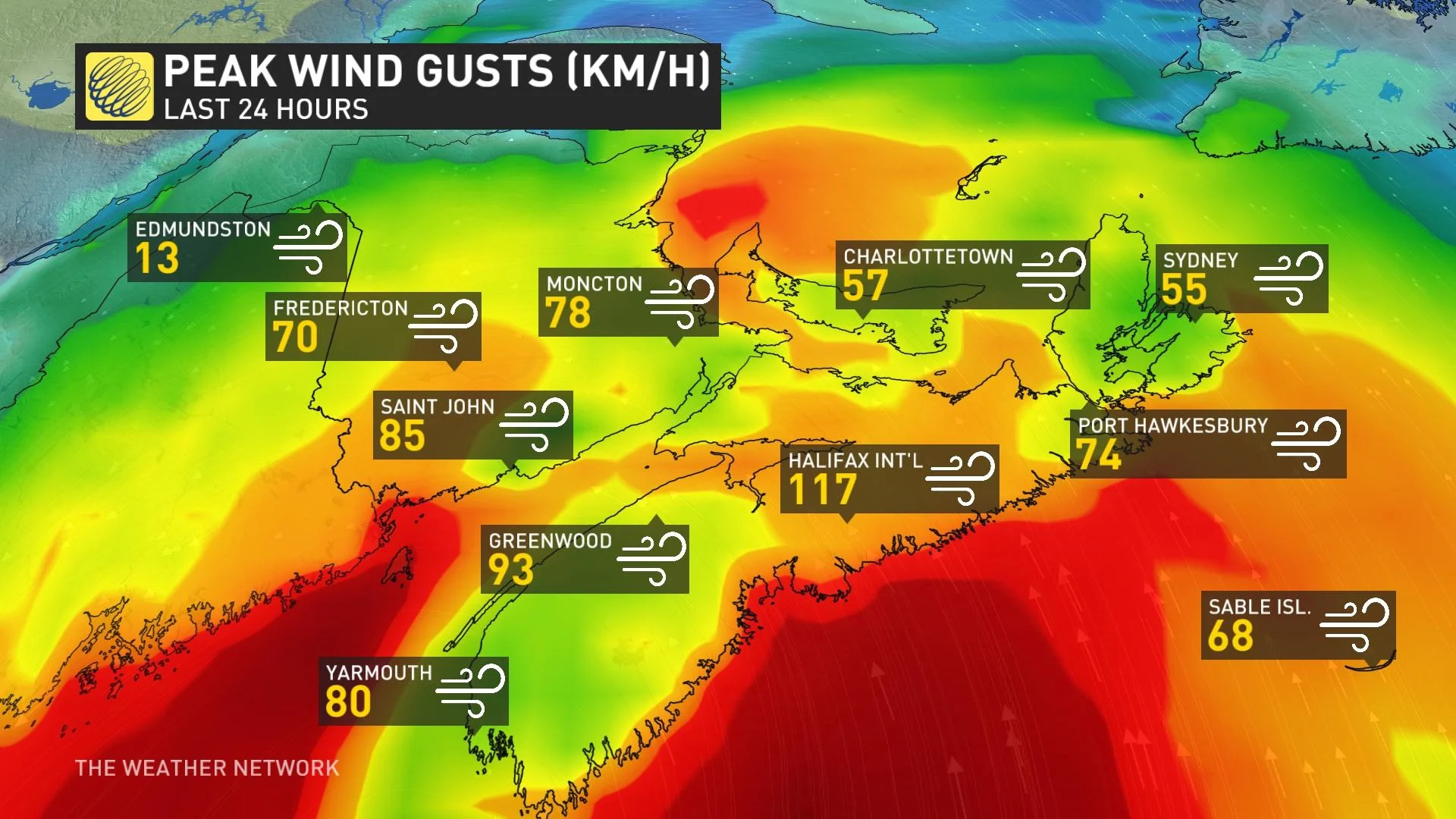
Halifax Airport reported a wind gust of 117 km/h on Saturday, an impressively high reading given its distance from the coast. That's the strongest wind gust for the region since Hurricane Fiona last September. A buoy just offshore measured waves higher than 10 metres during the height of the storm.
WATCH: House shifted off its foundation as Lee hits Peggy's Cove
Lee lost its tropical characteristics on Saturday before rolling ashore, transitioning from a hurricane into a storm that more closely resembled a potent nor’easter.
We’ll see the storm continue to weaken as it pushes north across the Maritimes overnight Saturday into Sunday, losing strength and falling apart in the process.
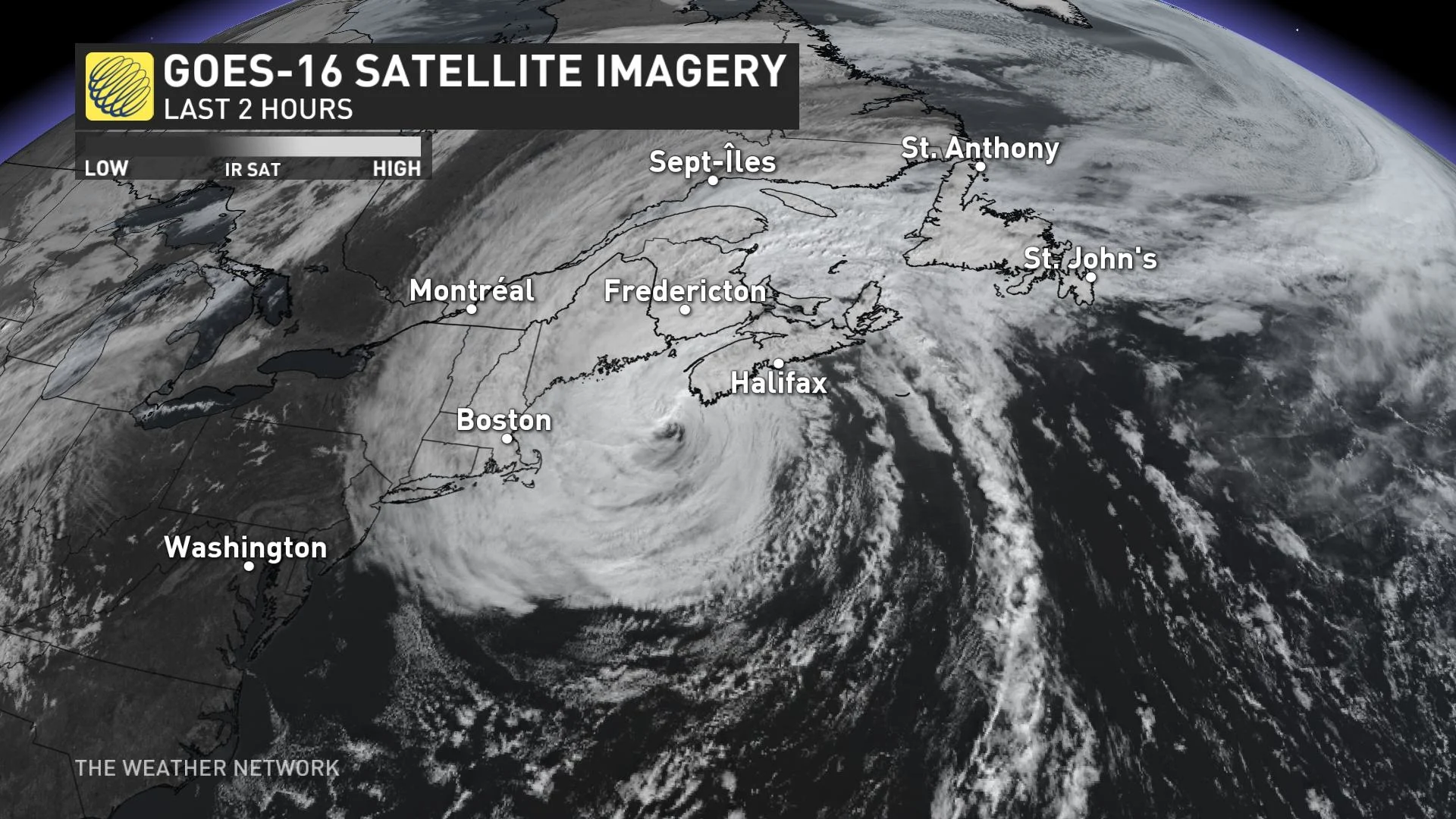
A threat for heavy rains, high winds, and coastal flooding will continue to extend hundreds of kilometres from the centre of the storm. The biggest concerns will be dangerous surf and coastal flooding, especially during the next high tide cycle Saturday evening.
As a result of these potential hazards, there are widespread alerts in effect throughout the Maritimes.
The Canadian Hurricane Centre (CHC) issued tropical storm warnings for parts of Nova Scotia and P.E.I.
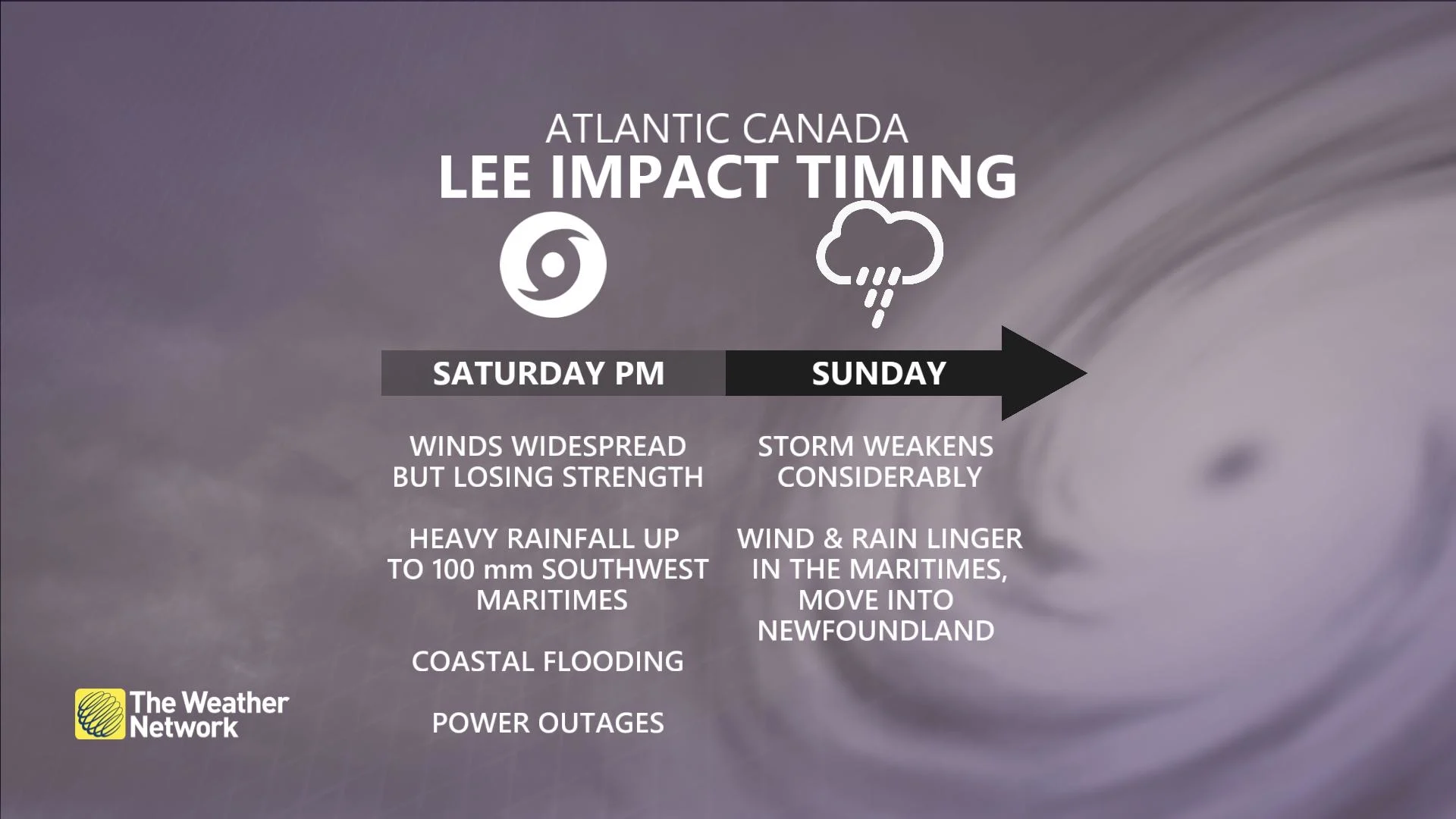
Click here to stay up-to-date with the latest watches and warnings.
Lingering impacts Sunday
While the worst conditions across the Maritimes came Saturday, lingering impacts are expected throughout Sunday as the storm weakens and moves away.
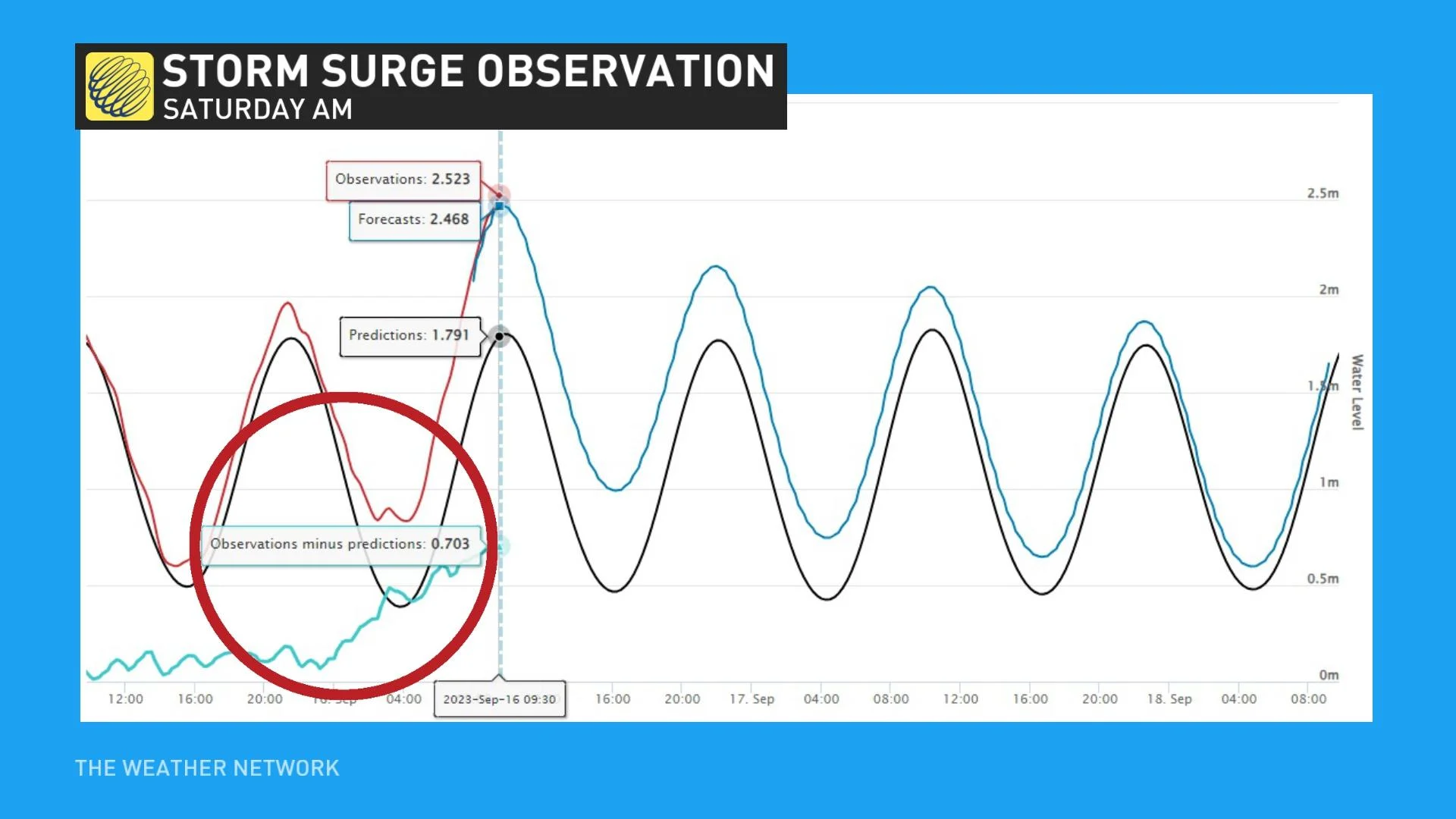
Rain
Between 60-100 mm of rain is possible in the southern Maritimes over the weekend. The risk for flooding has increased over western Nova Scotia and the Annapolis Valley.
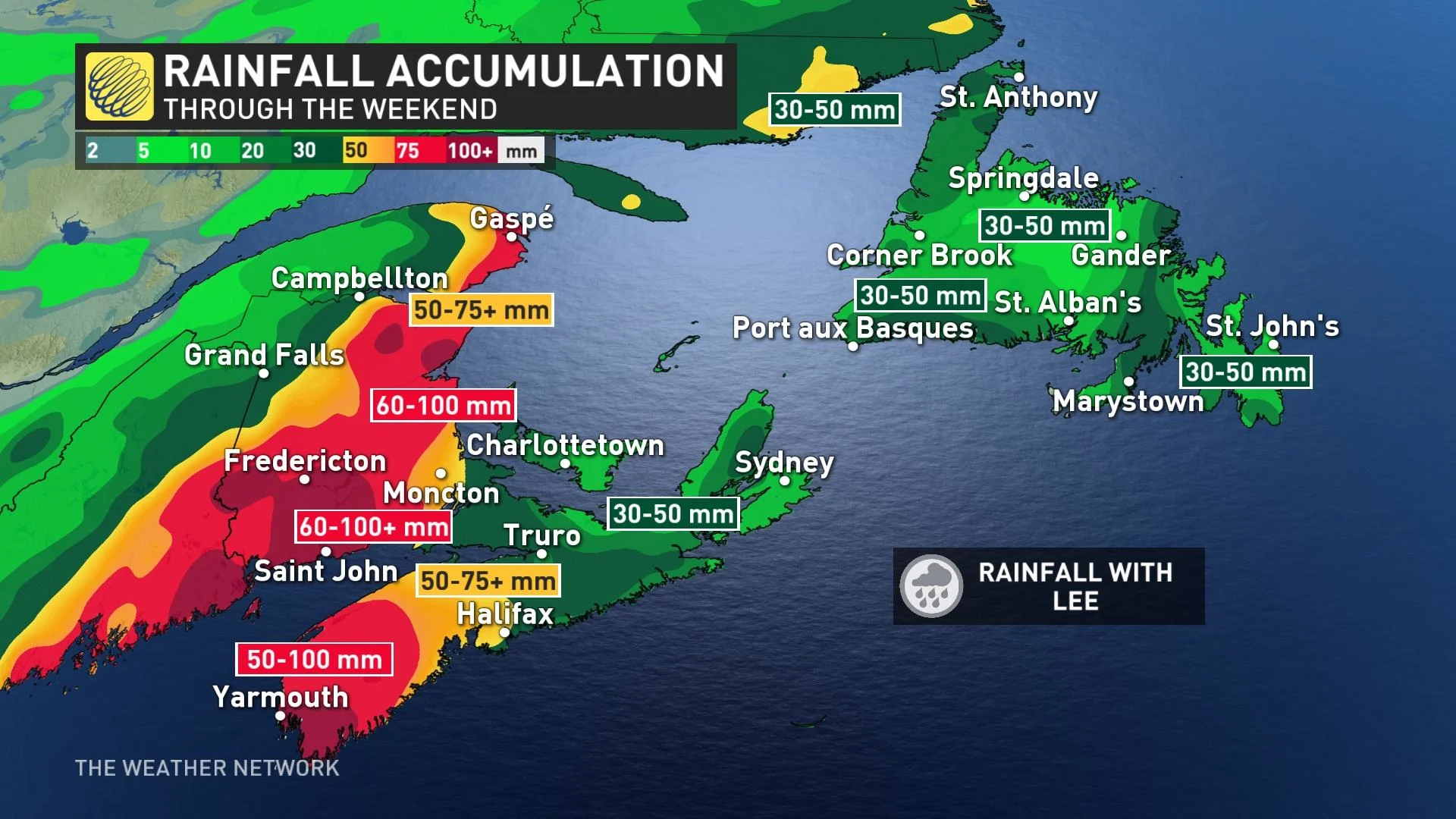
"There could be heavy amounts in the vicinity of the track itself with indications of possibly 75 mm directly from Lee," the CHC warns. "This combined with the rain that fell there Thursday increases the vulnerability to further flooding in that area."
Wind
Communities along the coast experienced the storm’s strongest winds, with wind speeds quickly decreasing inland.
Areas under the hurricane watch saw the strongest winds, with gusts as high as 120 km/h at times. The strongest winds are southeast of the system where gusts around 100 km/h are still being reported along the eastern shore of Nova Scotia.
These winds would typically result in some tree damage and power outages, especially as trees still have their leaves.
Gusty winds are still possible Sunday even as conditions improve.
WATCH: VIDEO: Lee starts the day in Nova Scotia with strong winds and rough waves
Storm surge
High waves and elevated water levels are widespread due to the large size of the storm. Rough waves and storm surge flooding will pose the greatest threat to coastal communities on the Bay of Fundy shores and the southwest coast of Nova Scotia.
A storm surge warning has been issued for Halifax Metro and Halifax County West, Halifax County - East of Porters Lake, Lunenburg County, Queens County, Shelburne County, Guysborough County. People near the coast are being urged to monitor for worsening conditions and be prepared to move to a safer location at a moment's notice.
A storm surge of 0.72 m was reported in Halifax Harbour at high tide Saturday. Additional coastal flooding is possible across the Maritimes for the duration of the storm.
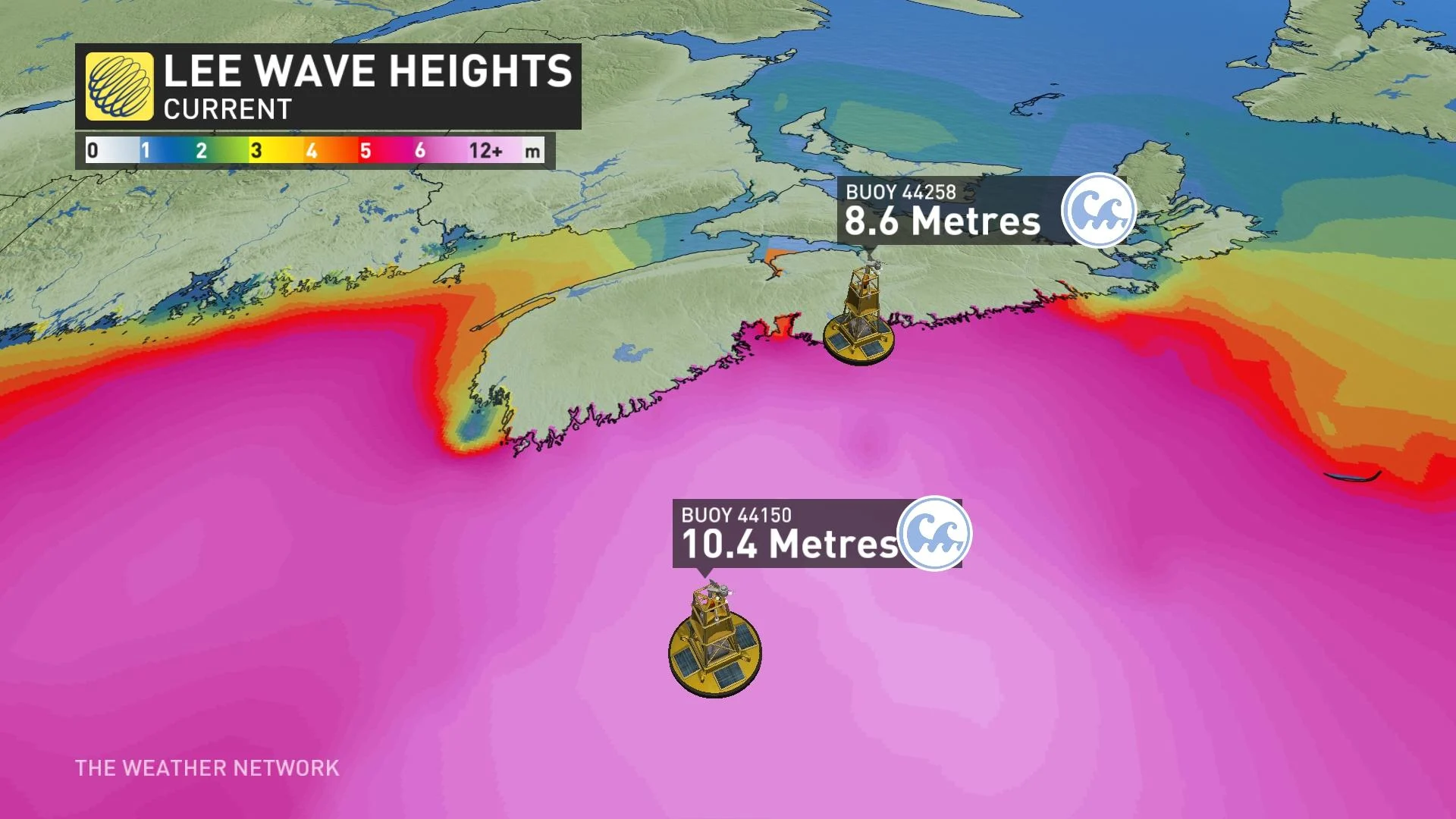
Stay with The Weather Network for the duration of this storm as we closely monitor this hurricane and its developments.
Header image courtesy of J. Albert Walker in Queensland, Nova Scotia, via Twitter.










